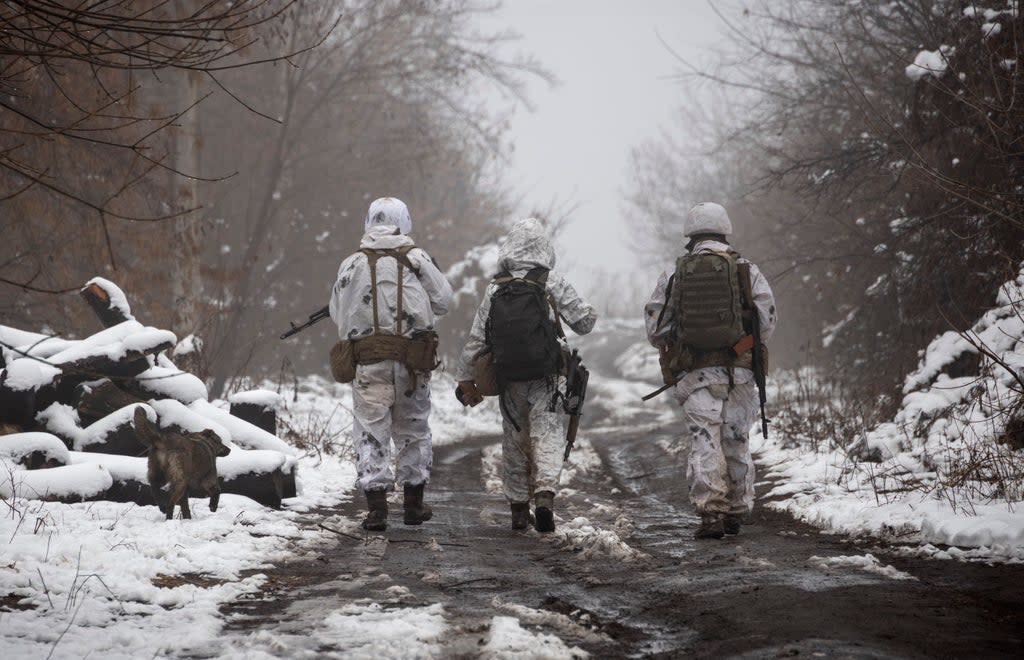Ukraine-Russia crisis: What is going on?

Russia has amassed tens of thousands of troops along its border with Ukraine in recent months, increasing suspicion that an invasion is imminent.
World leaders including the US, Nato and the European Union have warned Russia against any aggression, insisting that there will be retaliation if it attacks Ukraine.
Over the last week, with tensions rapidly escalating, the US has put 8,500 troops on alert to deploy to Ukraine.
Meanwhile, Nato yesterday announced it was sending additional fighter jets and ships to eastern Europe, further increasing fears of all-out conflict.
So what is actually going on between Ukraine and Russia, where did it all begin, and how might the crisis unfold?
How did the crisis start?
Going back eight years gives the current crisis more context.
Russia annexed Ukraine’s Crimean Peninsula in 2014 after the country's Moscow-friendly president was driven from power by mass protests. Weeks later, Russia threw its weight behind a separatist insurgency that broke out in Ukraine's east.
More than 14,000 people died in the fighting that devastated Ukraine’s eastern industrial heartland known as Donbas. Both Ukraine and the West accused Russia of sending troops and weapons to back the rebels but Moscow denied the allegations stating that Russians who joined the separatists did so voluntarily.
A 2015 peace agreement - the Minsk-2 agreement - was brokered by France and Germany helped end large-scale battles. The 13-point agreement obliged Ukraine to offer autonomy to separatist regions and amnesty for the rebels while Ukraine would regain full control of its border with Russia in the rebel-held territories.
The agreement is very complex however because Russia continues to insist it has not been a party in the conflict and is therefore not bound by its terms.
In point 10 of the agreement, there is a call for the withdrawal of all foreign armed formations and military equipment from the two disputed regions, Donetsk and Luhansk: Ukraine says this refers to forces from Russia, but Moscow denies it has any troops there.
Earlier this year, a spike in ceasefire violations in the east and a Russian troop concentration near Ukraine fueled war fears, but tensions abated when Moscow pulled back the bulk of its forces after maneuvers in April.
How is the situation at present?
In early December 2021, US intelligence officials determined that Russia was planning to deploy 175,000 troops near Ukraine’s border in preparation for a possible invasion that they believed could begin in early 2022.
Ukraine had complained in December that Moscow has kept over 90,000 troops near from the two countries’ border, warning that “large scale escalation” was possible in January.
Additionally, the commander-in-chief of the Ukrainian armed forces says Russia has about 2,100 military personnel in Ukraine’s rebel-controlled east and that Russian officers hold all commanding positions in the separatist forces.
Moscow has repeatedly denied the presence of its troops in eastern Ukraine, not providing any details about its military numbers and locations, saying that their deployment on its own territory should not concern anyone.
Meanwhile Russia accuses Ukraine of breaching the 2015 Minsk-2 Agreement, and has criticised the West for failing to encourage Ukrainian compliance.
Amid the recriminations, Russia has rejected a four-way meeting with Ukraine, France and Germany, saying it is useless in view of Ukraine’s refusal to abide by the 2015 agreement.
Moscow has strongly criticized the US and its Nato allies for providing Ukraine with weapons and holding joint drills, saying that this encourages Ukrainian hawks to try to regain the rebel-held areas by force.
What might happen next?
The situation has now reached a type of stalemate as both sides anticipate the other’s next move.
Moscow continues to deny talks of a Ukraine invasion while Western leaders have insisted that an incursion could be imminent.
US president Joe Biden said he thinks Vladimir Putin will “move in” on Ukraine, while UK prime minister Boris Johnson has warned that “gloomy” intelligence suggested Moscow was planning a lightning raid on Kiev. Meanwhile, personnel from both the US and UK embassies in the Ukrainian capital have been ordered home - a move president Vladimir Zelensky labelled as “overreacting.”
Nato and other Western leaders have threatened huge sanctions against Russia if it attacks Ukraine, but it remains to be seen whether Moscow will take any notice.

 Yahoo News
Yahoo News 
